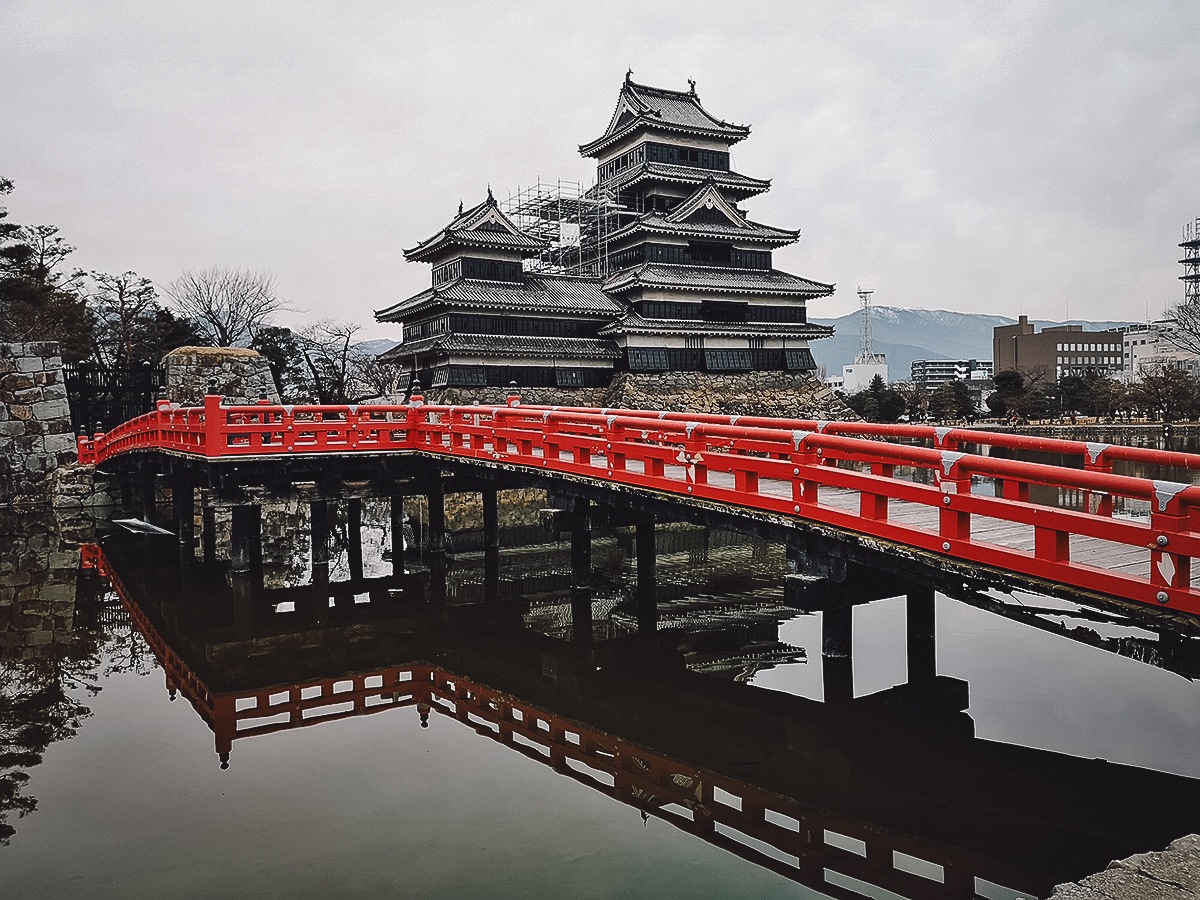SUMMARY HIGHLIGHTS
- Matsumoto Castle is one of the coolest-looking castles in Japan.
- The famous Japanese artist Yayoi Kusama is from Matsumoto. You can see some of her work at the Matsumoto City Museum of Art.
- Matsumoto is a good base to make day trips to Kamikochi and parts of the Nakasendo Trail.
To be honest, I went to Matsumoto for the soba. Nagano Prefecture produces some of the best soba in Japan so that was my main motivation for visiting this city in the Northern Japan Alps.
Of course, I had read about its castle, one of just twelve original castles left standing in Japan. But I had visited my fair share of castles at that point so the novelty had mostly worn off. Sure, the castles are beautiful, but like most temples and shrines, they start looking a little “same same” after the first few.
Not Matsumoto Castle.
On an overcast morning in the chill of winter, seeing Matsumotojo’s jet black walls against a backdrop of the Japanese Alps made my heart race, even for just a moment. It was imposing and intimidating, like Darth Vader in castle form. It looked badass.
And best of all, I was the only tourist there.
VISIT MATSUMOTO QUICK LINKS
To help you plan your trip to Matsumoto, I’ve put together links to recommended hotels, tours, and other travel-related services here.
HOTELS
Top-rated hotels in the city center, the most convenient area to stay in Matsumoto.
- Luxury: Mitsubikiya
- Midrange: Hotel Buena Vista
- Budget: Southern Cross Inn Matsumoto
EXPERIENCES
- Sightseeing Tour: Matsumoto Castle Town Walking Tour
- Kiso Valley Day Trip: Nakasendo Trail Walking Tour
- Food Tour: Matsumoto Castle, Sake & Food Walking Tour in Nagano
- Cooking Class: Matsumoto Castle Tour & Soba Noodle Making Workshop
OTHER SERVICES
GUIDE TABLE OF CONTENTS
MATSUMOTO AT A GLANCE
Matsumoto is a city in Nagano Prefecture. It has a population hovering around 240,000, making it the second-largest city in the prefecture, after Nagano City.
Matsumoto is best known for its castle, which stands as one of the twelve remaining original castles in Japan. It’s never been reconstructed due to damage from war, fire, or any natural disasters like floods or earthquakes.
Apart from its castle, Matsumoto is known for being a convenient gateway into the Northern Japan Alps. Thanks to its strategic location, popular destinations in the Japanese Alps like Kamikochi and the Tateyama-Kurobe Alpine Route are easily accessible from here.
BEST TIME TO VISIT MATSUMOTO
Like most destinations in Japan, spring and fall are popular times to visit Matsumoto. However, trips to Matsumoto aren’t usually confined to the city itself. The Japanese Alps are a major draw so choosing when to go depends on what else you want to do.
If you plan to go hiking in Kamikochi, then late spring to early autumn is the time to go. Late September to mid-October offers peak fall foliage but like the summer months, this is typically the most crowded time of the year.
Like Kamikochi, the Tateyama-Kurobe Alpine Route is open from spring till autumn but the famous snow corridor is at its tallest in April and May. People looking to do some hiking in Murodo will find the most ideal conditions from around July until mid-October.
Kamikochi and the Tateyama-Kurobe Alpine Route close in winter but that doesn’t mean it’s a bad time to visit Matsumoto. When I went in January, I enjoyed a magical snow-filled day in Matsumoto before proceeding to Hida Takayama and Shirakawa-go.
WHERE TO STAY IN MATSUMOTO
Matsumoto isn’t a big city so staying in and around the city center will put you within walking distance of its top tourist attractions. If you plan on using Matsumoto as a base for day trips, then staying near Matsumoto Station will be convenient.
You can visit Booking.com and Agoda for hotel listings in Matsumoto. Here are some of the top-rated hotels in the city center:
- Luxury: Mitsubikiya
- Midrange: Hotel Buena Vista
- Budget: Southern Cross Inn Matsumoto
THINGS TO DO IN MATSUMOTO
Visit Mastumoto Castle
Without question, Matsumotojo is the main draw in Matsumoto. Known for its characteristic black wainscoting, it’s revered as one of the most beautiful and complete of Japan’s twelve remaining original castles.
I’ve been to a few castles in Japan and most have a predominantly white or light-colored exterior. Matsumotojo’s dark facade sets it apart and makes it look more grand and intimidating. Unlike reconstructed castles rebuilt with ferro-concrete, Matsumoto Castle retains its original wooden interior.
Together with Himeji Castle in Hyogo, Matsumotojo is the most impressive castle I’ve been to thus far in Japan. It looks even more striking when viewed from the west, over the moat and across the bright red Uzumi Bridge (picture at the top of this article).
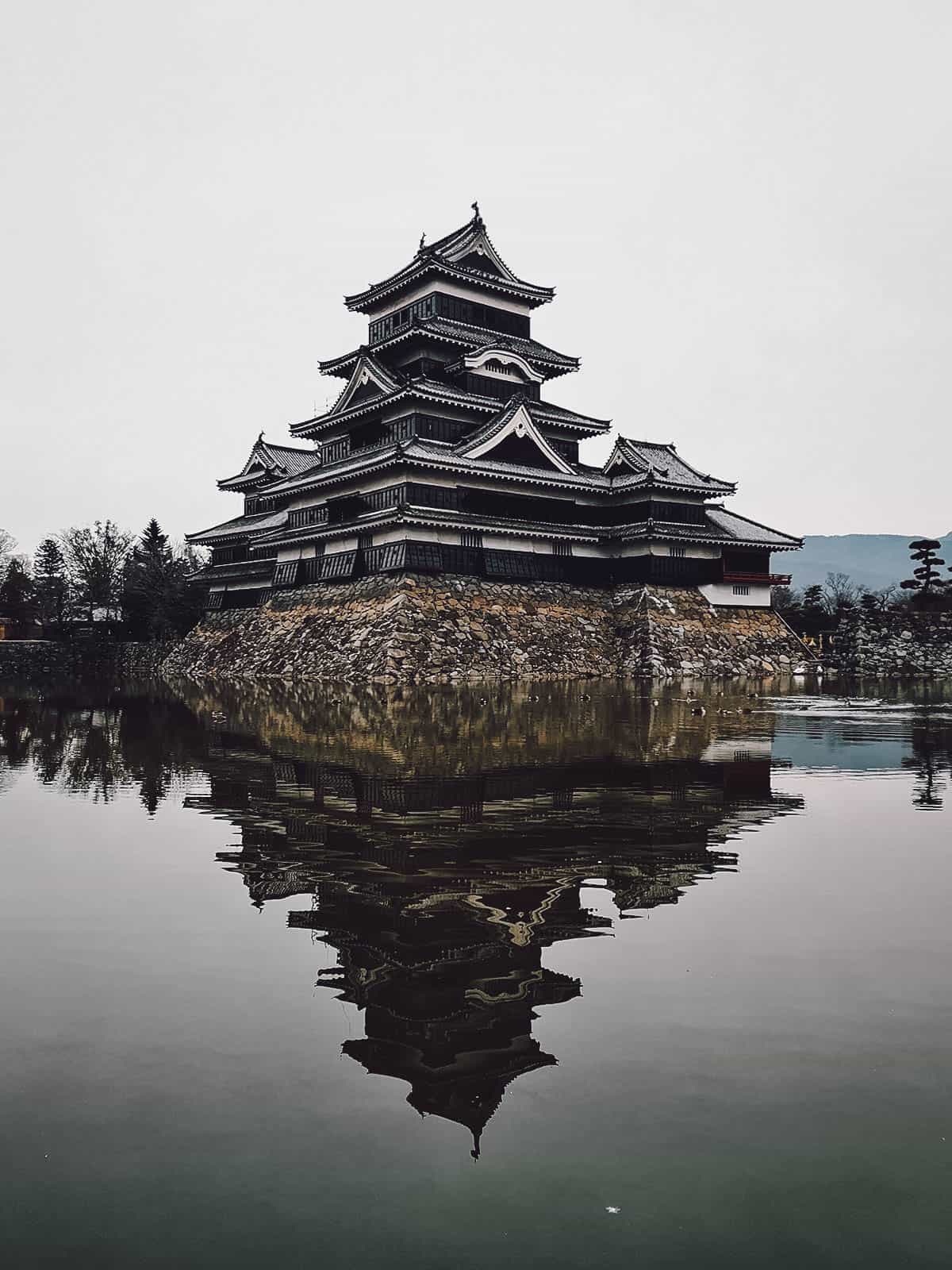
Go Shopping in a Historical District
One of my favorite things to do in Japan is to explore its traditional neighborhoods. It’s even more fun when buildings in those neighborhoods have been turned into commercial spaces, like Nakamachi-dori, a charming street in downtown Matsumoto that once housed the city’s merchants during the Edo Period.
One of the most notable features of Nakamachi-dori are these traditional warehouses called kura. Used as storehouses for rice, sake, and other goods, you’ll recognize them from their distinctive black-and-white crisscrossed patterned walls.
Nakamachi-dori is one of the main commercial areas in Matsumoto. You’ll find many of the city’s best restaurants on this street, along with shops selling different types of Japanese handicrafts.
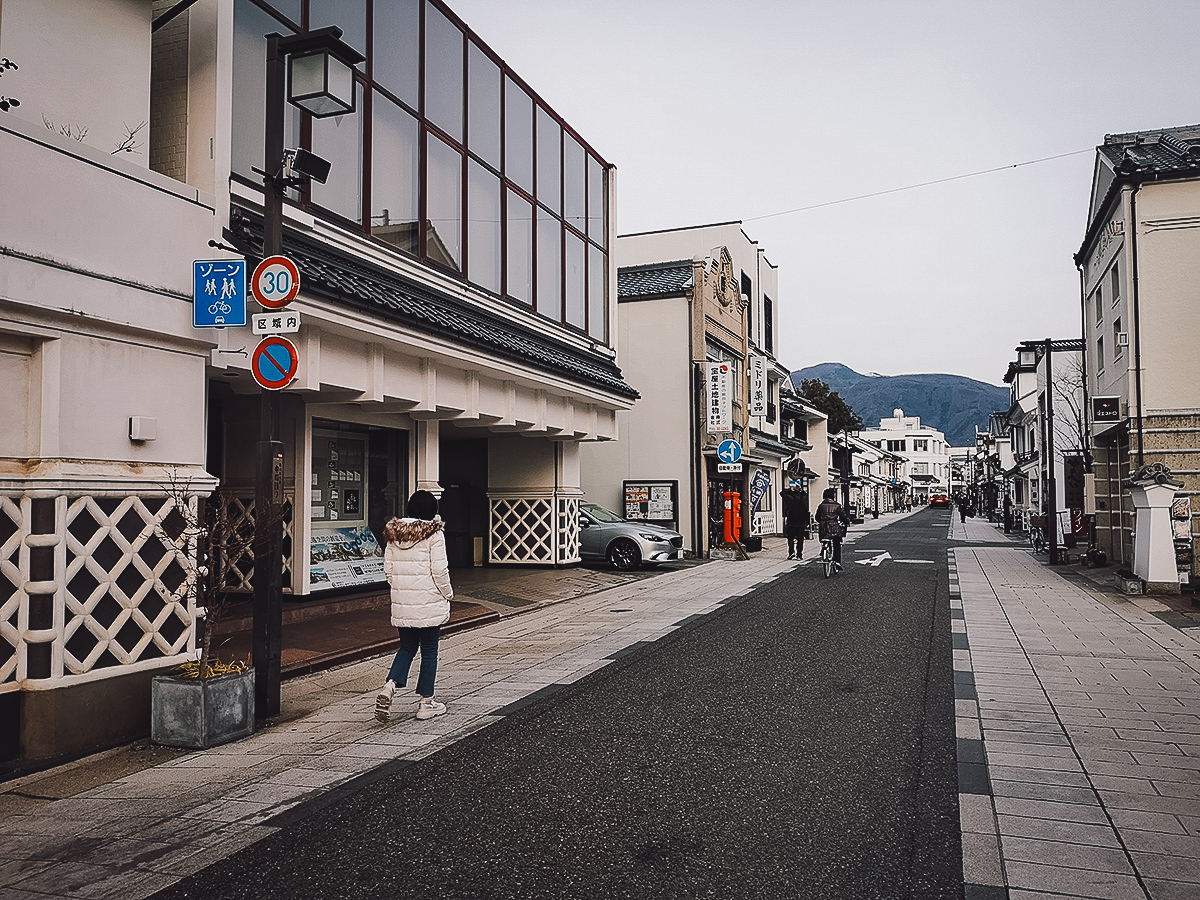
Even more charming is Nawate-dori, a pedestrian-only street that runs parallel to Nakamachi-dori across the river. Located near Yohashira Shrine, it’s home to dozens of shops and restaurants housed in traditional wooden buildings.
When you enter the shops, the first thing you’ll notice are the many cute frog-themed items for sale. Nawate-dori is nicknamed “Frog Street”, and there’s even a fiberglass statue of a frog at the mouth of the street.
A sign along Nawate-dori explains how the banks of the river once echoed with the call of frogs, hence the nickname.
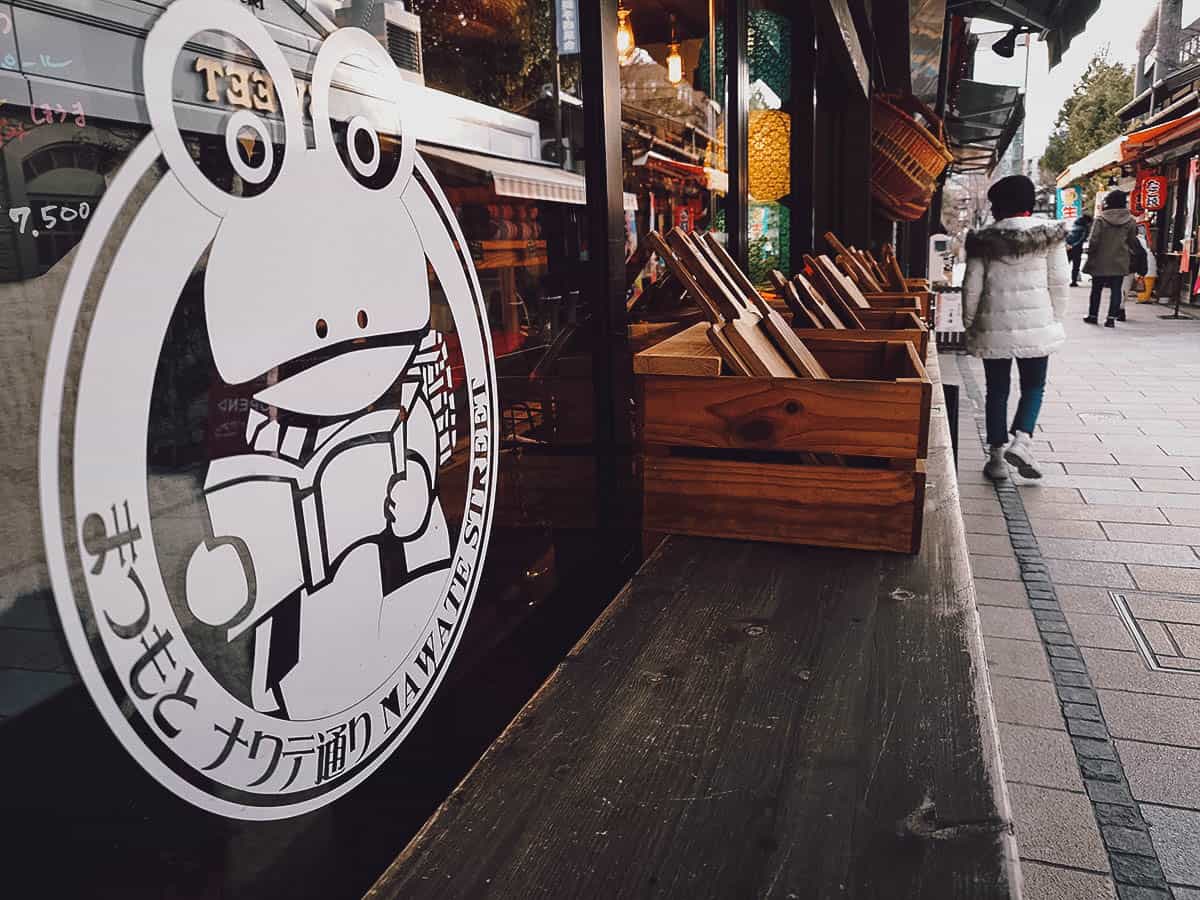
Visit the Matsumoto City Museum of Art
After visiting Matsumoto Castle and exploring its historical districts, you wouldn’t associate Mastumoto with modern art, until you see this building and learn who was born in this city.
Yayoi Kusama, famous for her polka-dot-covered sculptures and installations, was born and raised in Matsumoto. I thought that was pretty cool considering she’s arguably the most influential visual artist to come out of Japan!
Decorated with her iconic polka dots, the Matsumoto City Museum of Art features a collection of the artist’s works, including this whimsical sculpture of tulips outside the building’s main entrance.
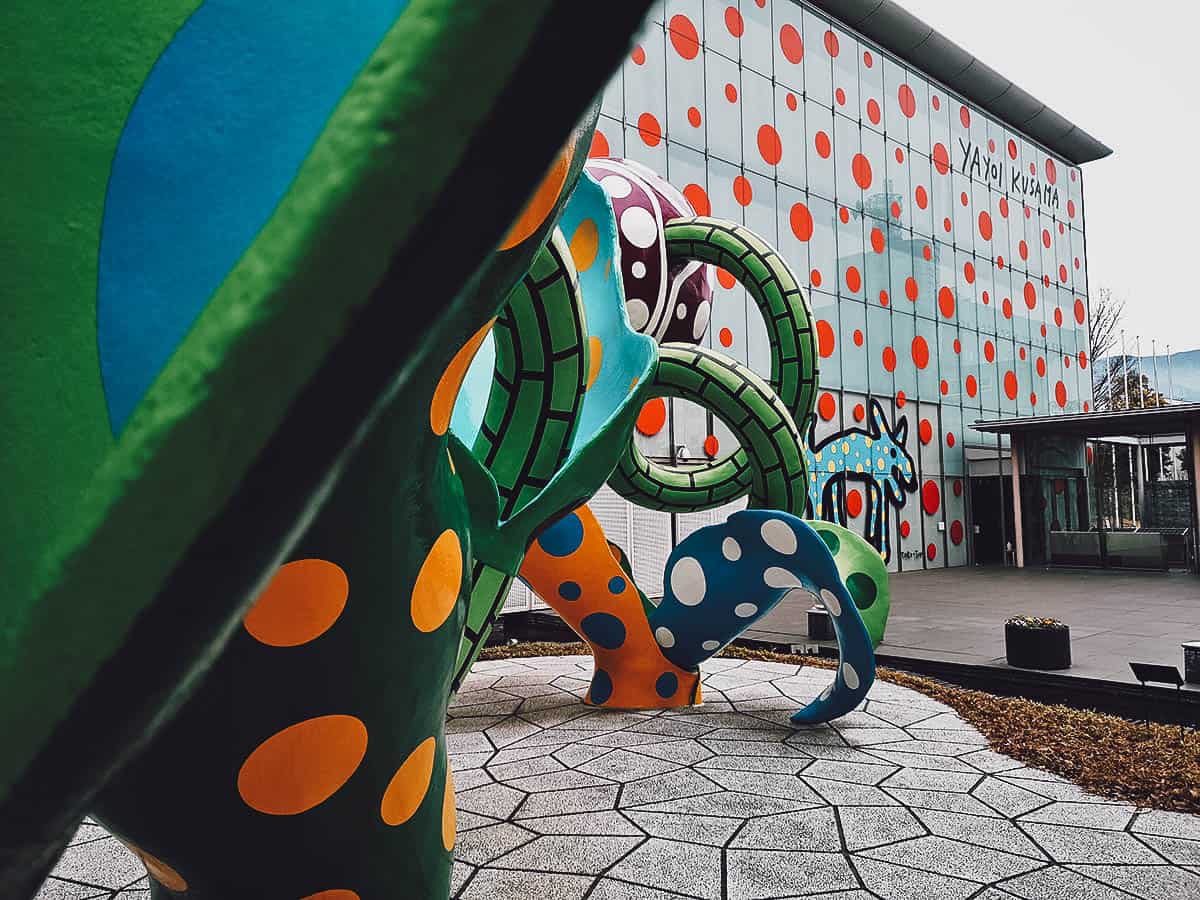
Make a Wish at a Shrine
If you aren’t templed out by the time you get to Matsumoto, then you may want to make a quick stop at Yohashira Shrine, a small Shinto shrine located just a stone’s throw from Nawate-dori.
Built in the Meiji Period, Yohashira Shrine is dedicated to four Shinto deities. Apparently, this is a rarity even in Japan, causing locals to believe that the shrine possesses special wish-granting capabilities.
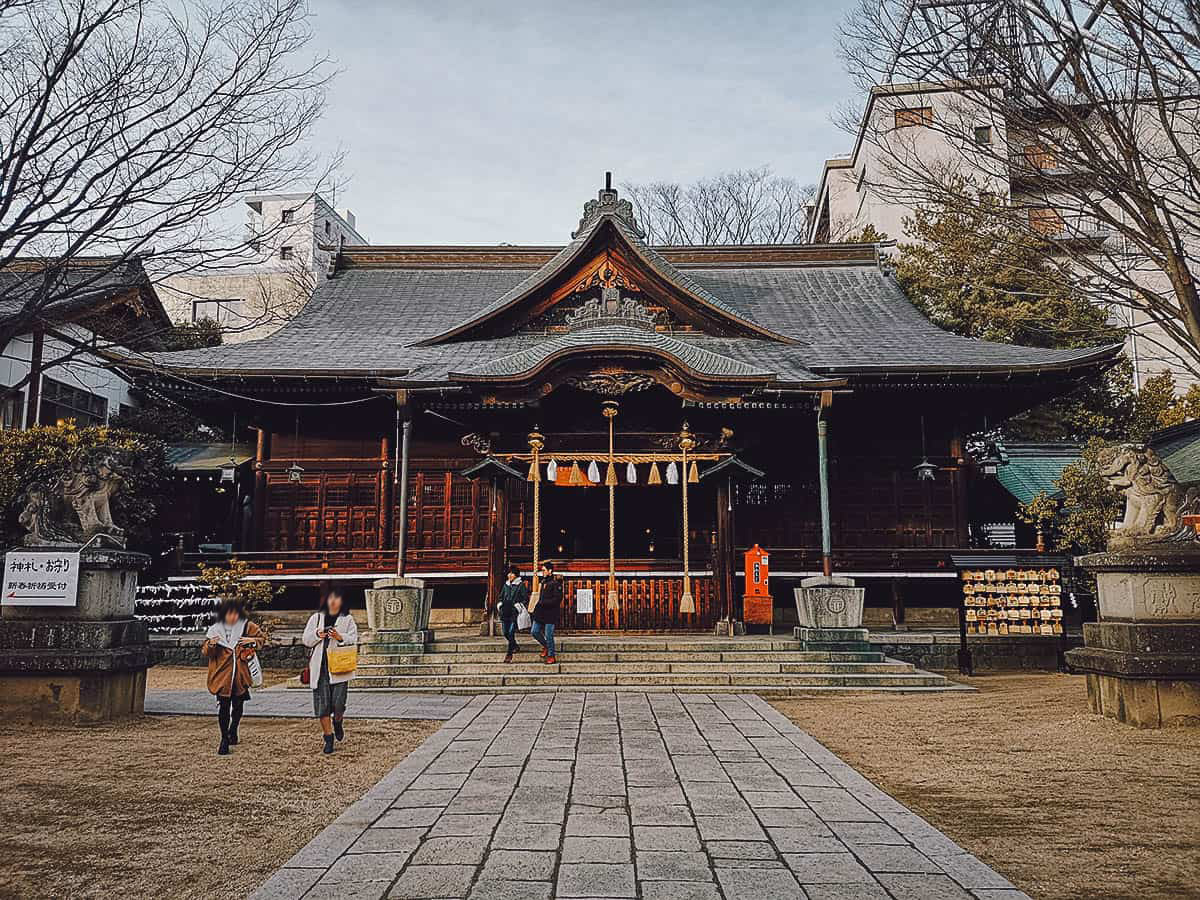
Enjoy Some of Japan’s Best Soba
As described at the top of this article, soba was the main reason I went to Matsumoto. Soba noodles are widely available throughout the country, but thanks to its altitude and climate, Nagano Prefecture is said to produce some of the finest buckwheat in Japan.
Soba can be served hot or cold but eating them chilled with a tsuyu dipping sauce is the best way to appreciate the noodles. Itadakimasu!
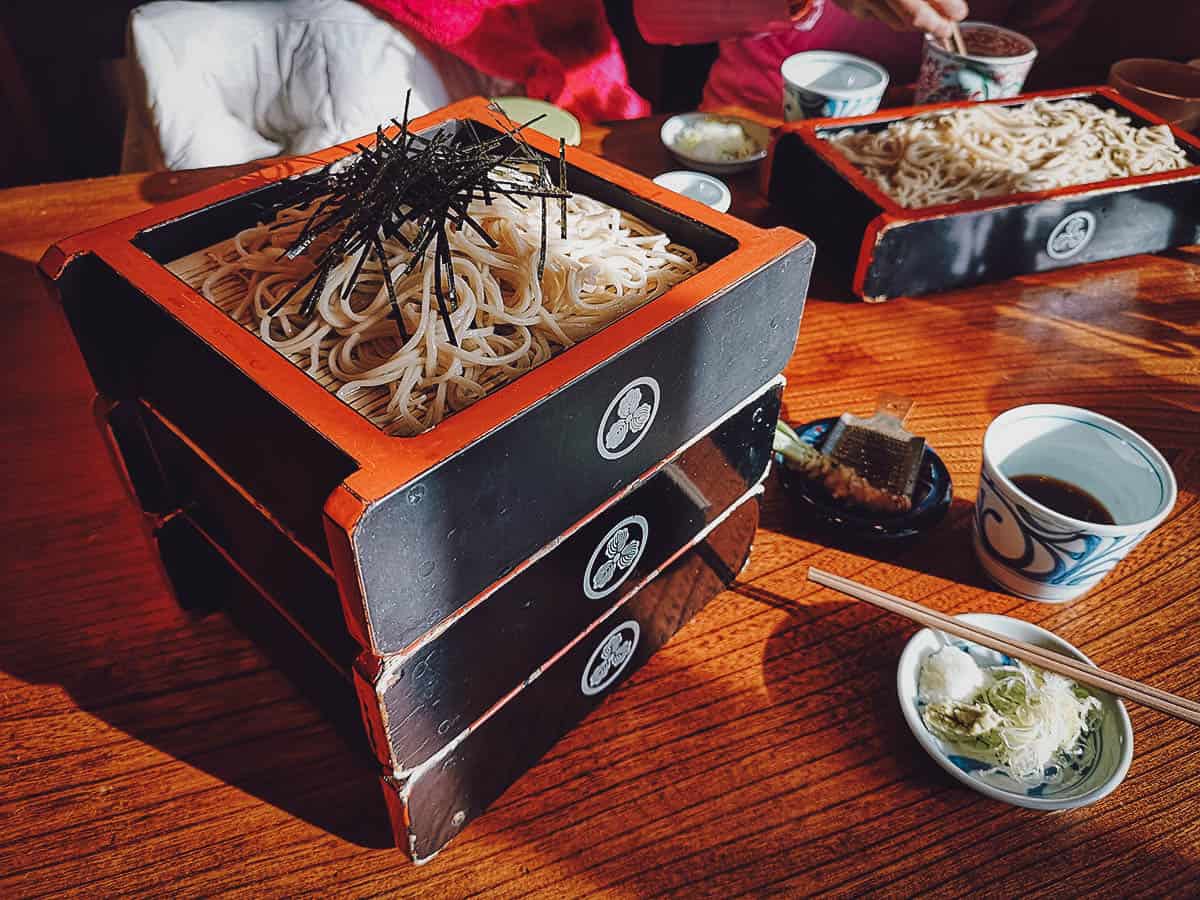
DAY TRIPS FROM MATSUMOTO
Daio Wasabi Farm
I hate to admit this, but I’ve rarely eaten sushi I didn’t like. Why? Because even the poorest quality sushi can be masked by the magical combination of wasabi and soy sauce. If this knobby green rhizome makes you feel things, then spending a few hours at one of Japan’s biggest wasabi farms is a must.
Located in Azumino, about an hour north of Matsumoto, not only will Daio Wasabi Farm show you why wasabi is so difficult and expensive to cultivate, but you’ll get to try a variety of wasabi-based products like wasabi sausages, wasabi ice cream, and wasabi beer.
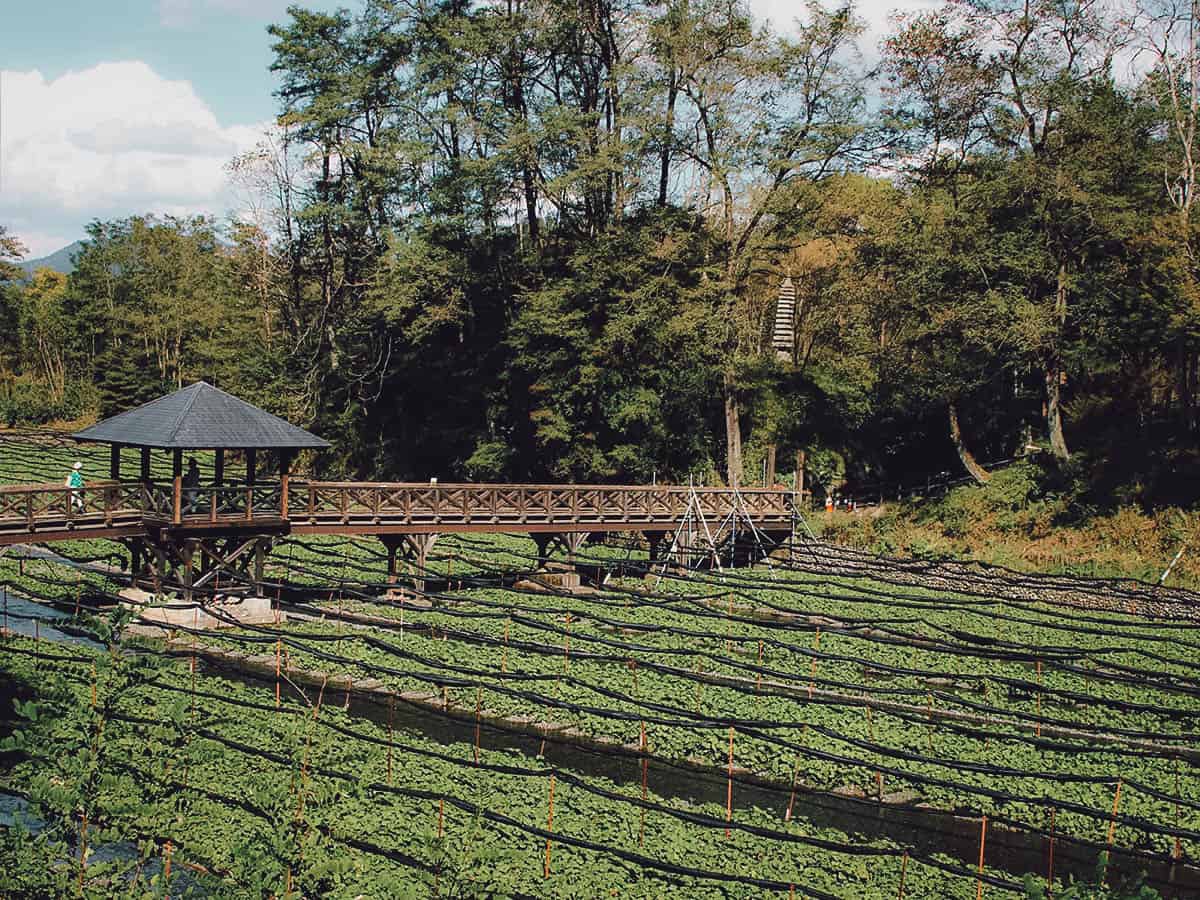
Photo by N_FUJITA via Shutterstock
Kamikochi
Outside of winter, visits to Matsumoto will likely be paired with a trip to this popular resort in the Northern Japan Alps of Nagano Prefecture.
Open from late spring till autumn, Kamikochi is famous for its spectacular mountain scenery and easy hiking trails. It offers terrific hiking opportunities in the spring and summer but it becomes especially beautiful when the valley bursts into peak fall colors, usually around late September to mid-October.
Accessible only by bus or taxi, you can reach Kamikochi by bus from Matsumoto via Shin-Shimashima Station in around an hour and a half.
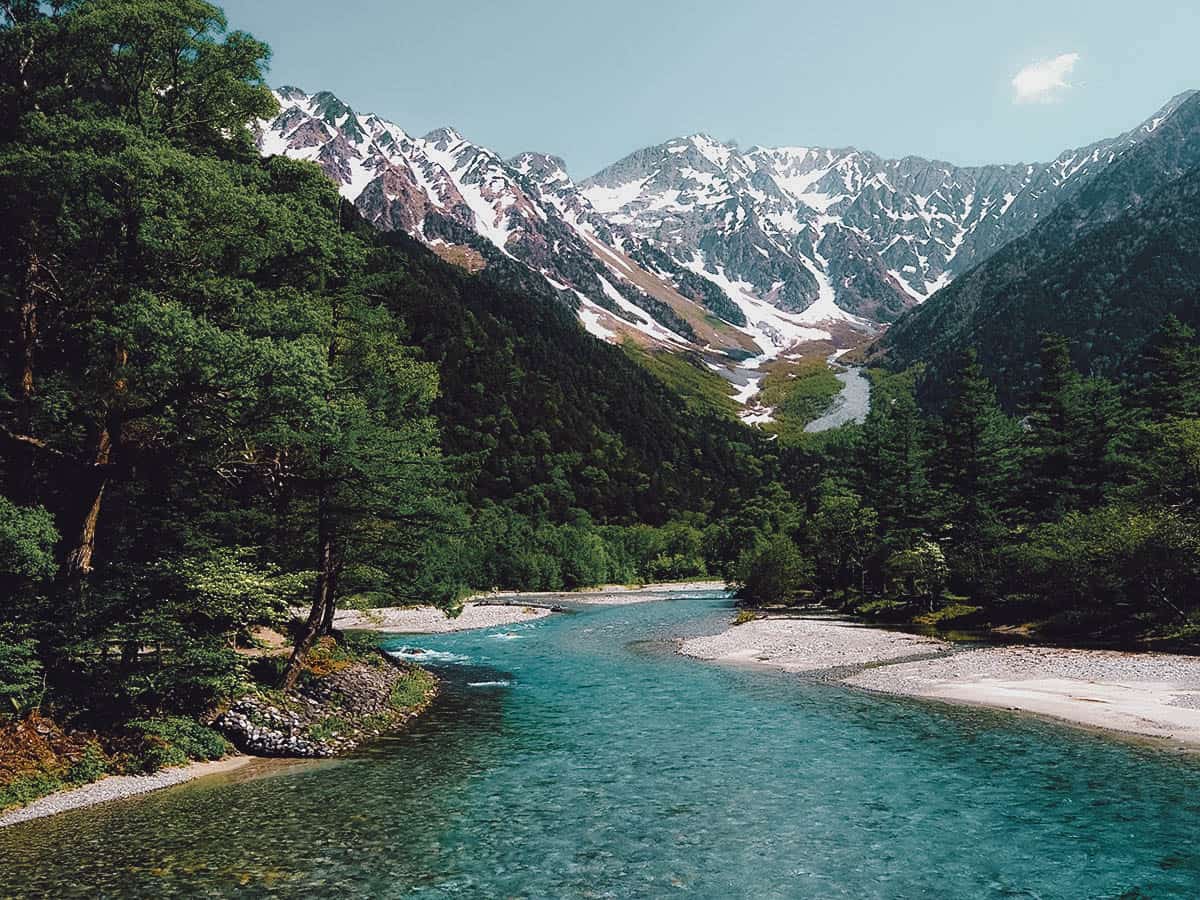
Photo by eye-blink via Shutterstock
Kiso Valley
Ever wondered what it was like to walk in the footsteps of samurai? If you have, then a walk along the famed Nakasendo Trail is probably something you’ll want to do.
Located in Nagano Prefecture, the Kiso Valley runs alongside the mountains of the Central Alps. It’s home to the Kisoji, a 70 km (43.5 miles) trade route that forms part of the Nakasendo – one of two main routes that connected Edo and Kyoto.
Along this route are post towns that were developed to provide travelers with places to rest, eat, and sleep. Some of these towns – most notably Narai, Tsumago, and Magome – have been preserved to look just the way they did during the Edo Period.
Of the three post towns mentioned, Narai is the closest to Matsumoto, while the 8 km (5 mile) trail between Tsumago and Magome is one of the most scenic and well-maintained.
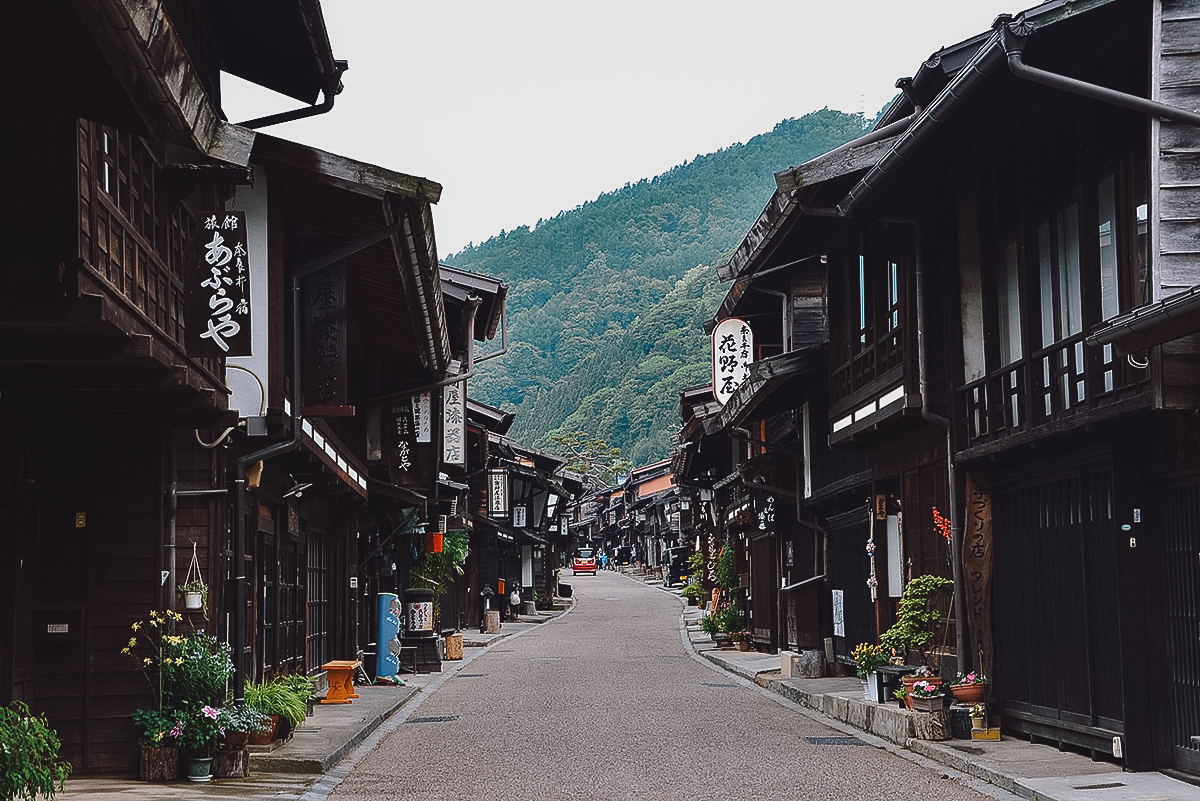
Photo by 皓月旗, CC BY-SA 4.0, via Wikimedia Commons / Processed in Photoshop and Lightroom
Hirayu Onsen
Hikers will likely want to visit Matsumoto when Kamikochi and the Tateyama-Kurobe Alpine Route are open, but that doesn’t mean a winter trip isn’t without its merits. Winters can get quite cold in Matsumoto, making a day trip to Okuhida even more attractive.
Okuhida is a remote mountainous region in Gifu Prefecture famous for its hot springs and large outdoor baths. There are a few onsen towns in Okuhida but Hirayu Onsen is the oldest and biggest. You can get there by bus from Matsumoto in around an hour and a half.
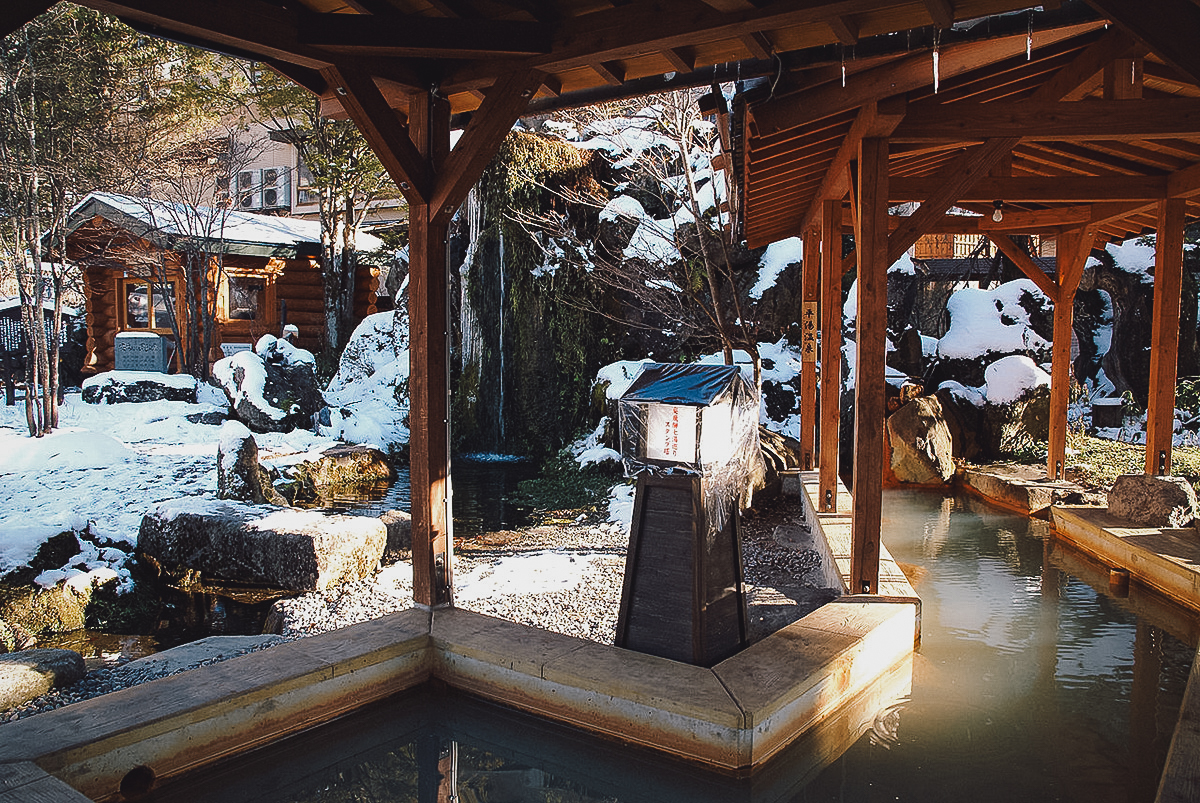
Photo by 663highland, CC BY-SA 3.0, via Wikimedia Commons / Processed in Photoshop and Lightroom
VISIT MATSUMOTO FAQs
Is Matsumoto worth visiting?
It depends. As striking as Matsumotojo is, I’m not sure if the castle alone is worth the side trip from Tokyo. But if you’re planning on visiting other destinations in the region like Kamikochi, Takayama, or the Kiso Valley, then Matsumoto is a worthwhile stop.
Can I visit Matsumoto on a day trip from Tokyo?
Being around three hours away, it is technically possible but I don’t see the point. Outside Matsumoto Castle, there isn’t much else in Matsumoto to merit a long and expensive day trip.
The only time it might be worth doing is if you have a countrywide JR Pass.
How many days should I stay in Matsumoto?
One day is enough time to see everything Matsumoto has to offer. Add more days if you’d like to use it as a base for day trips.
Can I do the Tateyama-Kurobe Alpine Route on a day trip from Matsumoto?
While technically you can, it will be a long and exhausting day trip. Unless you have a compelling reason to go back to Matsumoto, it may be better to rest and spend the night in another city like Toyama or Kanazawa after going through the alpine route.
THE FINAL SAY
While Matsumoto may not be as interesting as other destinations within the region – most notably Kanazawa, Hida Takayama, and Shirakawa-go – the magnificent Matsumotojo makes it compelling enough for a quick stop.
Personally, I’ll be returning to Matsumoto and staying for a few days in the fall, but primarily to go on hiking trips to Kamikochi and Kiso Valley.
Disclosure
This Matsumoto travel guide contains affiliate links, meaning we’ll earn a small commission if you make a booking at no additional cost to you. As always, we only recommend products and services that we’ve used ourselves and can personally vouch for. We appreciate your support as it helps us make more of these free travel guides. Arigato gozaimasu!

